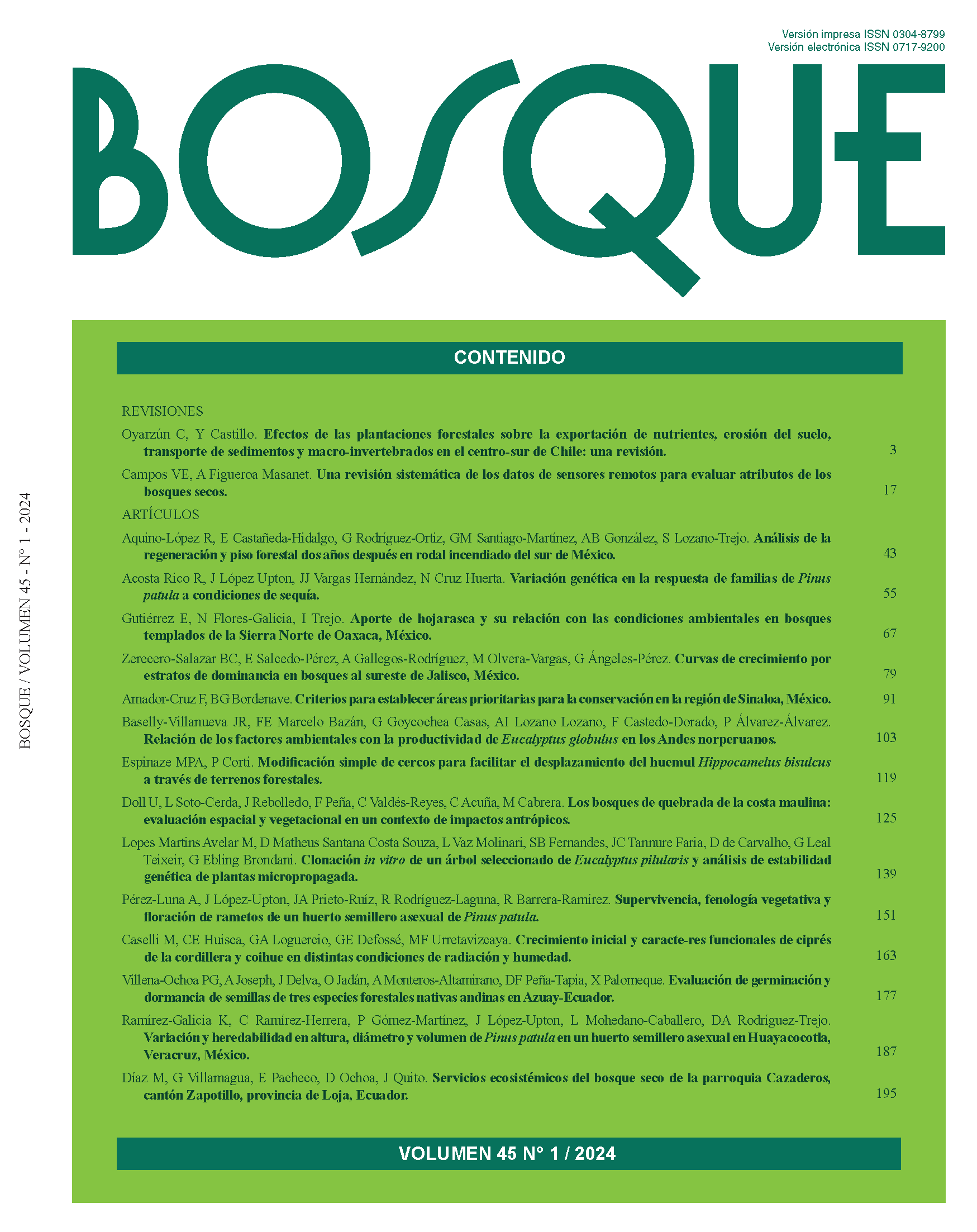Criteria to set conservation priorities for natural areas in the Sinaloa region, Mexico
Conteúdo do artigo principal
Resumo
The study aimed to identify Conservation Priority Sites (CPS) in the southern Sinaloa region, Mexico, using the Determination Index (DET) method. This method utilizes criteria such as Specific Diversity Index, Ratio of Species of Concern, Relative Scarcity Index, and Habitat Fragility Index to assess conservation stakes over wild plant species and habitats. In 2017 eight sampling sites were evaluated, two in mangroves, three in dry forests and three in semi-deciduous forests, each plot/area covers 0.12 hectares. Species- area curves were analyzed to quantify species diversity. A Floristic Originality Index determined the ratio of species of concern. A relative scarcity index was calculated from each type of vegetation surface area. Fragility of habitats was estimated over five levels of resilience. The results identified semi-deciduous forest sites as the highest conservation priorities due to their higher species diversity, number of species of concern, and scarce surface area. The DET method facilitated the ranking of CPS in the study area and is recommended as a valuable tool for landscape planning and conservation efforts.


 https://orcid.org/0000-0001-6295-9856
https://orcid.org/0000-0001-6295-9856